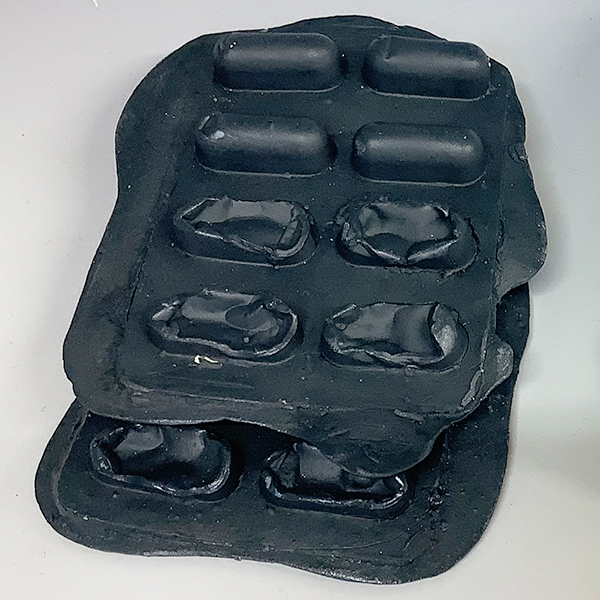Sally Bate uses clay because it holds memories from the earth, the place it came from, the history of previous makers, her making, her marks, the kiln firing. Also traces from everyone who touches the objects she makes. This narratology creates a relationship between the maker and the viewer.
Her practice is about memories, personal and collective. The idea of palimpsest, layers of memories revealed, concealed, traces, glimpses and especially stories and narrative. She is particularly interested in women’s stories.
Bate loves museums, collections and archives, seeking out artefacts and objects that travel across continents, through history and time. Objects that connect places, people and cultures. She is inspired by such objects and uses them as stories to create new objects that are recognisable but unusual, that intrigue and resonate with the viewer, evoking memories and triggering conversations.
‘Presence or Absence’ is a grouping of cast pill foils with some pods empty and some full, exploring themes of presence and absence in memory. The foils came from her mum’s house who has dementia and has moved into residential care. Sally made plaster casts from the pill foils and then cast them in Parian porcelain clay slip which has a marble like translucency. Some clay was stained black and oxides were added to create effects of erosion over time and decay. All the foils are different as are our memories.
Initially Sally imagined that the full pods were about presence and the empty ones absence. However she then thought more widely about the people who need the pills to take away pain, to sleep or to help them to control emotions or mental unbalance. For them an empty pod hopefully means they personally have more presence. For them the full pods can mean different things – reassurance they have pills to make them feel better, sadness that they have to rely on taking pills, worry if they are low on pills and need more etc. A very different narrative for the users, a very different narrative relationship with the pill foils.

“As in museums or archives, these small objects have the potential to speak of larger issues. Our memories, experiences and thus our interpretations are personal but also on some levels collective, especially in the sharing, media heavy world we now inhabit.”

